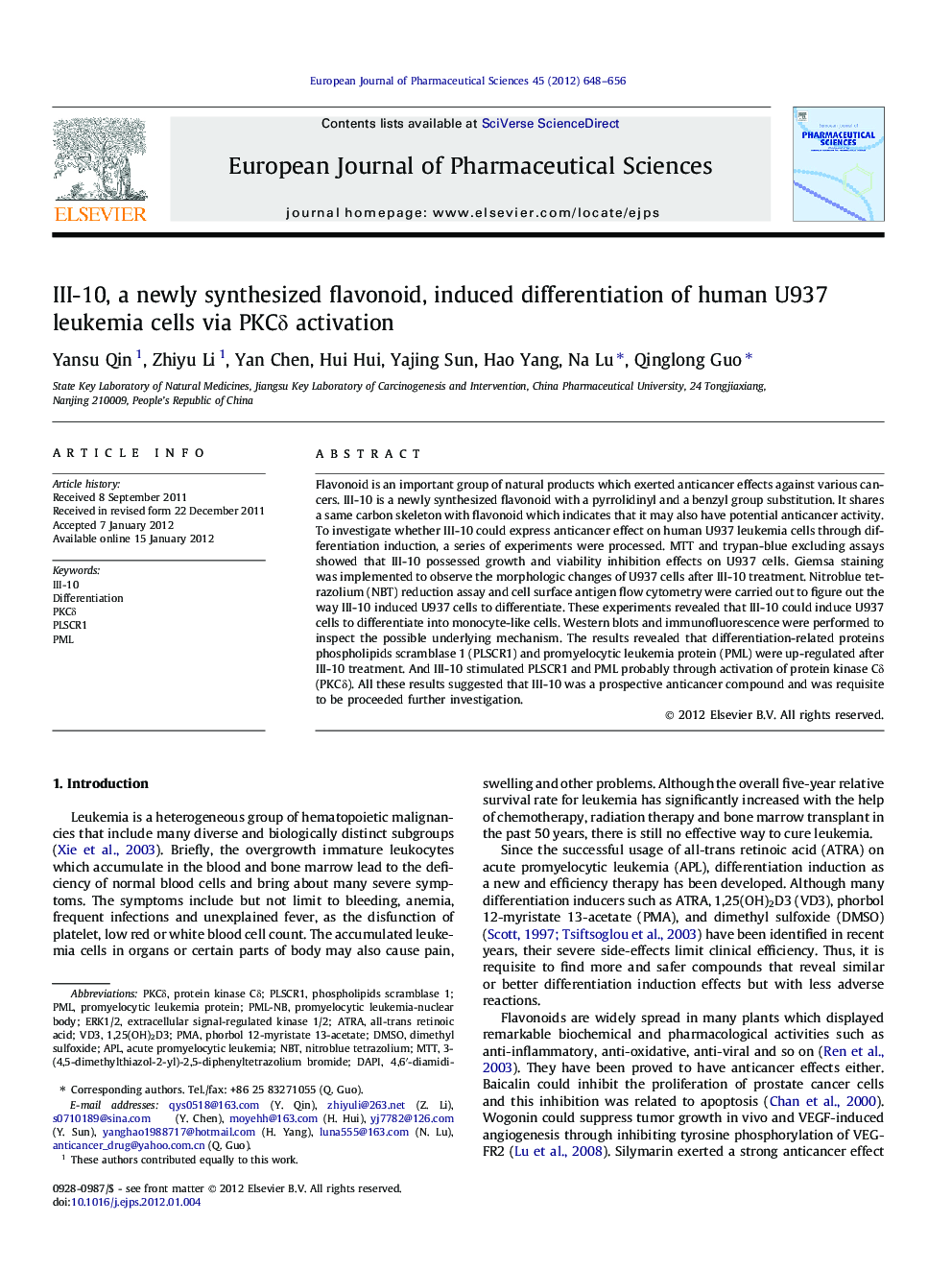| Article ID | Journal | Published Year | Pages | File Type |
|---|---|---|---|---|
| 2481248 | European Journal of Pharmaceutical Sciences | 2012 | 9 Pages |
Flavonoid is an important group of natural products which exerted anticancer effects against various cancers. III-10 is a newly synthesized flavonoid with a pyrrolidinyl and a benzyl group substitution. It shares a same carbon skeleton with flavonoid which indicates that it may also have potential anticancer activity. To investigate whether III-10 could express anticancer effect on human U937 leukemia cells through differentiation induction, a series of experiments were processed. MTT and trypan-blue excluding assays showed that III-10 possessed growth and viability inhibition effects on U937 cells. Giemsa staining was implemented to observe the morphologic changes of U937 cells after III-10 treatment. Nitroblue tetrazolium (NBT) reduction assay and cell surface antigen flow cytometry were carried out to figure out the way III-10 induced U937 cells to differentiate. These experiments revealed that III-10 could induce U937 cells to differentiate into monocyte-like cells. Western blots and immunofluorescence were performed to inspect the possible underlying mechanism. The results revealed that differentiation-related proteins phospholipids scramblase 1 (PLSCR1) and promyelocytic leukemia protein (PML) were up-regulated after III-10 treatment. And III-10 stimulated PLSCR1 and PML probably through activation of protein kinase Cδ (PKCδ). All these results suggested that III-10 was a prospective anticancer compound and was requisite to be proceeded further investigation.
